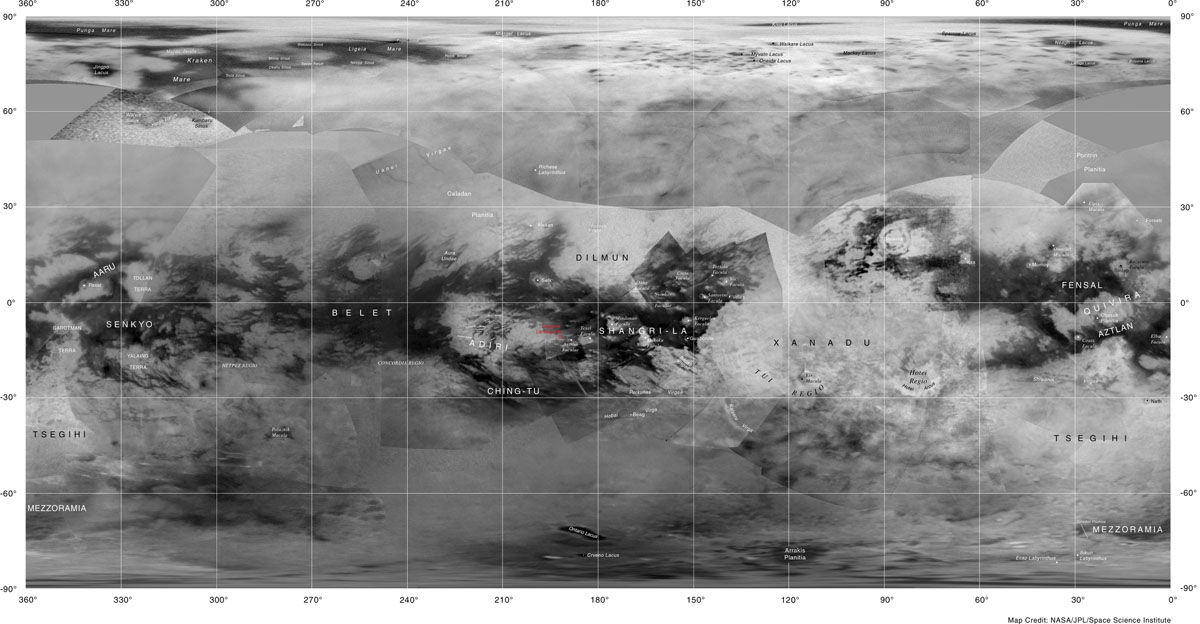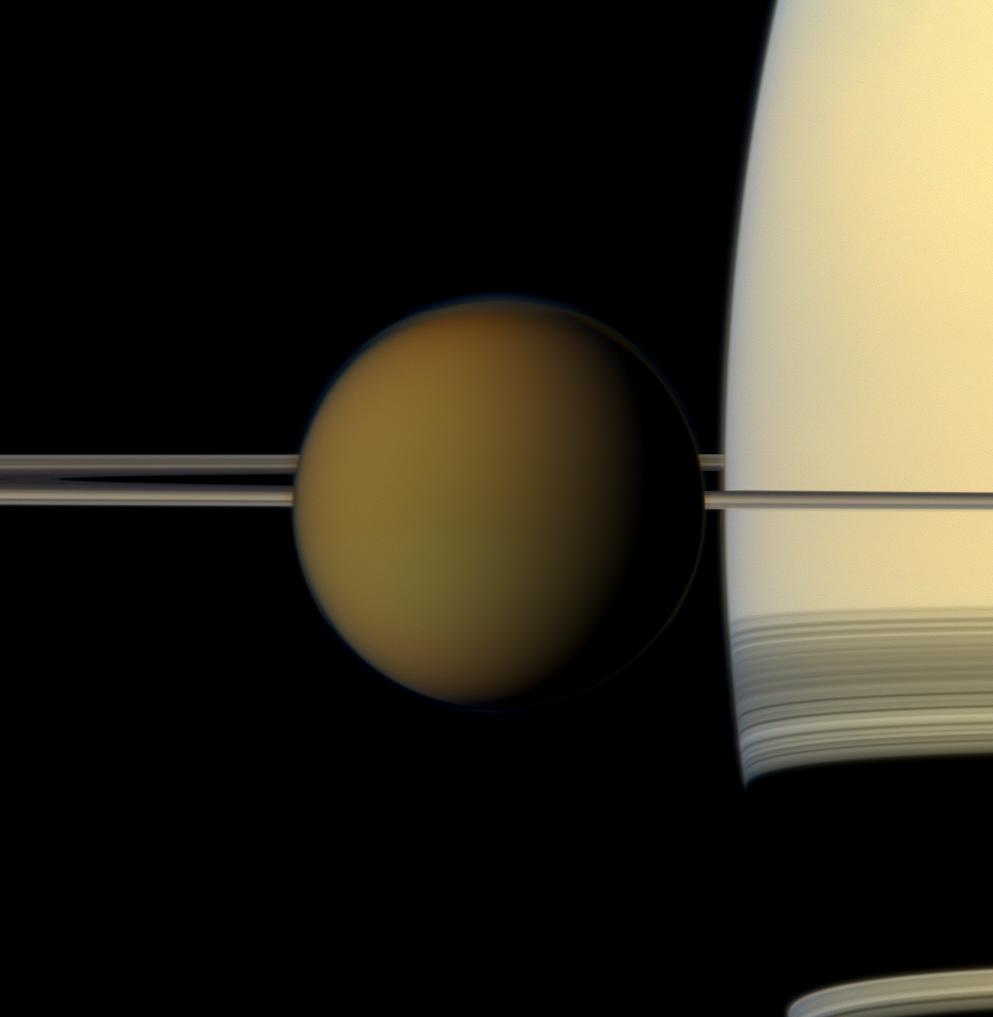Image Cache: Oh Titan, you are a beautiful, intriguing moon! This composite image uses infrared light to look at the surface of Saturn’s moon during a recent flyby by the Cassini spacecraft. It’s a look at the Saturn-facing hemisphere of Titan.
Browse through the cool photos, animations and diagrams in Gizmodo’s Image Cache here.
What are we looking at? The dark, sideways-H-shaped area represents the parallel regions of Fensal, to the north, and Azland, to the south. Both are filled with dunes. Above-center is Menrva, Titan’s largest confirmed impact crater. The highly-reflective region to the bottom left is Xanadu, a possible tectonic feature criss-crossed with lineaments. Near Xanadu closer to the equator is Hotei Regio, the best evidence for slushy cryovolcanism on the moon.

Named features on Titan. Image credit: NASA/USGS
Titan has a thick atmosphere that blocks visible light. Lucky for Cassini, Titan is relatively cool, so the spacecraft can peer through the haze with near-infrared light to see surface details. Because we can’t see infrared light, the image has been re-coloured to the visible spectrum with 1.3 microns mapped to blue, 2.0 microns to green, and 5.0 microns to red.

Titan in visible wavelengths in May 2011, with the opaque haze obscuring the surface. Image credit: NASA/JPL-Caltech/Space Science Institute
Parts of the composite are in greater detail than the rest of the moon. These subframes were captured during the closest approach of the flyby, allowing for the greatest resolution. This particular flyby was at an unusually high altitude, staying more than 10,000km away instead of the usual 1200km away. While this sacrifices detail, it allows for a moderate resolution of a few miles per pixel over wider areas.
This composite of Titan was captured during the T-114 flyby on 13 November 2015. Cassini is on its farewell tour of the Saturn system, making final flybys before crashing into the gas giant in late 2017.
